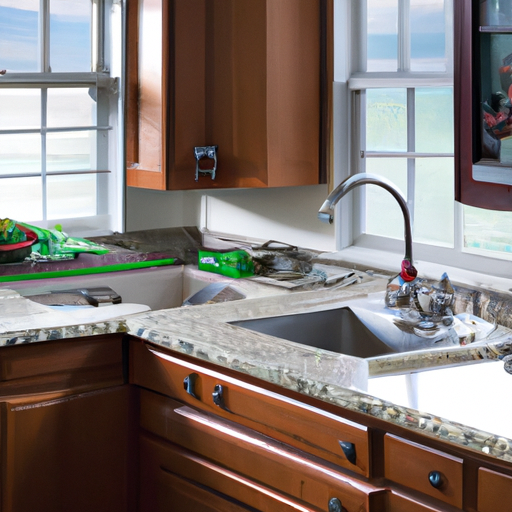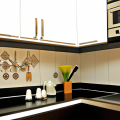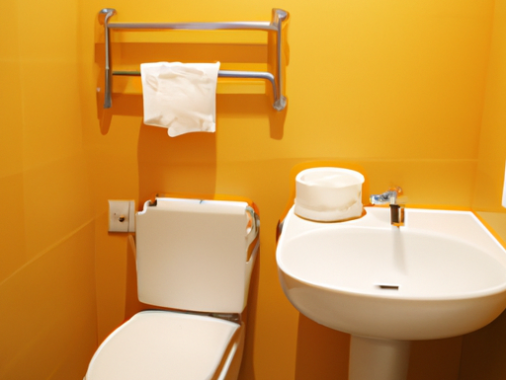-
Table of Contents
- Introduction
- How to Choose the Right Corner Kitchen Sink for Your Home
- Creative Ways to Utilize a Corner Kitchen Sink
- Pros and Cons of Installing a Corner Kitchen Sink
- The Benefits of Installing a Corner Kitchen Sink
- Tips for Installing a Corner Kitchen Sink
- Design Ideas for Corner Kitchen Sinks
- The Best Materials for Corner Kitchen Sinks
- Q&A
- Conclusion
Introduction
Corner kitchen sinks are a great way to maximize the space in your kitchen. They are perfect for small kitchens, as they can fit into tight spaces and provide plenty of room for washing dishes and preparing food. Corner kitchen sinks come in a variety of styles and materials, so you can find one that fits your kitchen’s design and budget. Whether you’re looking for a traditional stainless steel sink or a modern composite material, there are plenty of corner kitchen sink ideas to choose from.
How to Choose the Right Corner Kitchen Sink for Your Home
When it comes to choosing the right corner kitchen sink for your home, there are several factors to consider. First, you need to determine the size of the sink that will best fit your kitchen space. Corner kitchen sinks come in a variety of sizes, from small single-basin sinks to large double-basin sinks. You should also consider the type of material the sink is made from. Popular materials include stainless steel, porcelain, and composite materials.
The next factor to consider is the installation type. Corner kitchen sinks can be installed as either drop-in or undermount sinks. Drop-in sinks are the most common type and are installed by dropping the sink into a pre-cut hole in the countertop. Undermount sinks are installed by attaching the sink to the underside of the countertop.
Finally, you should consider the style of the sink. Corner kitchen sinks come in a variety of styles, from traditional to modern. You should choose a style that complements the overall look of your kitchen.
By taking the time to consider these factors, you can ensure that you choose the right corner kitchen sink for your home. With the right sink, you can create a stylish and functional kitchen space.
Creative Ways to Utilize a Corner Kitchen Sink
A corner kitchen sink is a great way to maximize the space in a small kitchen. It can be used to create a unique and functional kitchen design. Here are some creative ways to utilize a corner kitchen sink:
1. Create a Wet Bar: A corner kitchen sink can be used to create a wet bar in the kitchen. This can be a great way to entertain guests and provide a convenient place to mix drinks.
2. Create a Prep Area: A corner kitchen sink can be used to create a prep area in the kitchen. This can be a great way to keep ingredients organized and make meal preparation easier.
3. Create a Cleaning Station: A corner kitchen sink can be used to create a cleaning station in the kitchen. This can be a great way to keep cleaning supplies organized and make cleaning up easier.
4. Create a Coffee Station: A corner kitchen sink can be used to create a coffee station in the kitchen. This can be a great way to keep coffee supplies organized and make coffee preparation easier.
5. Create a Pet Washing Station: A corner kitchen sink can be used to create a pet washing station in the kitchen. This can be a great way to keep pet supplies organized and make pet washing easier.
These are just a few of the creative ways to utilize a corner kitchen sink. With a little creativity, you can create a unique and functional kitchen design that will make your kitchen more efficient and enjoyable.
Pros and Cons of Installing a Corner Kitchen Sink
Pros of Installing a Corner Kitchen Sink
1. Space-Saving: Corner kitchen sinks are a great way to save space in a small kitchen. They are designed to fit into the corner of the kitchen, which allows for more counter space and storage.
2. Versatility: Corner kitchen sinks come in a variety of styles and materials, so you can find one that fits your kitchen’s design.
3. Easy to Clean: Corner kitchen sinks are easy to clean because they are usually made of stainless steel or porcelain, which are both easy to wipe down.
Cons of Installing a Corner Kitchen Sink
1. Limited Space: Corner kitchen sinks are limited in terms of space, so they may not be suitable for larger kitchens.
2. Limited Functionality: Corner kitchen sinks are usually designed for one purpose, such as washing dishes or preparing food. They may not be suitable for other tasks, such as washing large pots and pans.
3. Difficult to Install: Corner kitchen sinks can be difficult to install, as they require precise measurements and careful installation.
The Benefits of Installing a Corner Kitchen Sink
Installing a corner kitchen sink can be a great way to maximize the available space in your kitchen. This type of sink is designed to fit into the corner of the kitchen, allowing you to make the most of the space you have. There are several benefits to installing a corner kitchen sink, including increased storage space, improved ergonomics, and a more aesthetically pleasing look.
One of the main benefits of installing a corner kitchen sink is the increased storage space it provides. By utilizing the corner of the kitchen, you can create additional storage space for items such as pots, pans, and other kitchen utensils. This can be especially beneficial for smaller kitchens, where space is at a premium.
Another benefit of installing a corner kitchen sink is improved ergonomics. By placing the sink in the corner, you can create a more comfortable working environment. This is because the sink is closer to the center of the kitchen, making it easier to reach and use. Additionally, the corner placement of the sink can help to reduce the strain on your back and neck when washing dishes.
Finally, installing a corner kitchen sink can also help to create a more aesthetically pleasing look. By utilizing the corner of the kitchen, you can create a more streamlined and organized look. This can help to make the kitchen look more inviting and attractive.
Overall, installing a corner kitchen sink can be a great way to make the most of the available space in your kitchen. By utilizing the corner of the kitchen, you can create additional storage space, improve ergonomics, and create a more aesthetically pleasing look. If you are looking for a way to maximize the space in your kitchen, installing a corner kitchen sink is a great option.
Tips for Installing a Corner Kitchen Sink
1. Measure the area where you plan to install the corner kitchen sink. Make sure that the sink will fit in the space and that there is enough room for the plumbing connections.
2. Install the sink cabinet. Make sure that the cabinet is level and secure.
3. Connect the plumbing. Make sure that the pipes are properly connected and that there are no leaks.
4. Place the sink in the cabinet. Make sure that the sink is level and secure.
5. Install the faucet. Make sure that the faucet is securely attached to the sink and that there are no leaks.
6. Connect the drain. Make sure that the drain is properly connected and that there are no leaks.
7. Install the countertop. Make sure that the countertop is level and secure.
8. Install the backsplash. Make sure that the backsplash is level and secure.
9. Test the sink. Make sure that the sink is functioning properly and that there are no leaks.
10. Enjoy your new corner kitchen sink!
Design Ideas for Corner Kitchen Sinks
Corner kitchen sinks are a great way to maximize the space in a small kitchen. They provide a unique look and can be used to create a focal point in the room. Here are some design ideas for corner kitchen sinks that can help you make the most of your space.
1. Install a farmhouse sink. Farmhouse sinks are a great way to add a rustic touch to your kitchen. They are typically made of porcelain or stainless steel and come in a variety of sizes and shapes.
2. Add a corner sink with a window. If you have a window in your kitchen, you can install a corner sink beneath it. This will create a unique look and provide natural light to the area.
3. Install a double bowl sink. Double bowl sinks are great for washing dishes and preparing food. They provide plenty of space and can be installed in a corner.
4. Install a single bowl sink. Single bowl sinks are perfect for small kitchens. They provide plenty of space and can be installed in a corner.
5. Install a vessel sink. Vessel sinks are a great way to add a modern touch to your kitchen. They come in a variety of shapes and sizes and can be installed in a corner.
No matter what type of corner kitchen sink you choose, it is important to make sure it is properly installed. This will ensure that it is secure and will last for years to come.
The Best Materials for Corner Kitchen Sinks
Corner kitchen sinks are a great way to maximize the space in a kitchen. They are typically installed in the corner of the kitchen, allowing for more counter space and storage. When selecting a corner kitchen sink, it is important to consider the material it is made from. Different materials offer different benefits and drawbacks, so it is important to choose the right one for your needs.
Stainless steel is one of the most popular materials for corner kitchen sinks. It is durable, easy to clean, and resistant to corrosion and staining. It is also relatively inexpensive, making it a great option for those on a budget. However, stainless steel can be noisy and can show water spots and fingerprints.
Cast iron is another popular material for corner kitchen sinks. It is extremely durable and can last for decades with proper care. It is also resistant to staining and corrosion, and it is easy to clean. However, cast iron is heavy and can be expensive.
Granite is a popular choice for corner kitchen sinks. It is extremely durable and resistant to staining and corrosion. It is also easy to clean and can add a luxurious look to any kitchen. However, granite is expensive and can be difficult to install.
Copper is another option for corner kitchen sinks. It is extremely durable and resistant to staining and corrosion. It is also easy to clean and can add a unique look to any kitchen. However, copper is expensive and can be difficult to install.
Finally, composite materials are becoming increasingly popular for corner kitchen sinks. Composite materials are made from a combination of materials, such as quartz, granite, and acrylic. They are extremely durable and resistant to staining and corrosion. They are also easy to clean and can add a modern look to any kitchen. However, composite materials can be expensive and can be difficult to install.
When selecting a corner kitchen sink, it is important to consider the material it is made from. Different materials offer different benefits and drawbacks, so it is important to choose the right one for your needs. Stainless steel, cast iron, granite, copper, and composite materials are all popular options for corner kitchen sinks.
Q&A
1. What are the benefits of having a corner kitchen sink?
A corner kitchen sink can be a great space-saving solution for a small kitchen. It can also provide more counter space and make it easier to access the sink from multiple angles. Additionally, corner kitchen sinks can be a great way to add a unique design element to your kitchen.
2. What types of corner kitchen sinks are available?
There are a variety of corner kitchen sinks available, including single bowl, double bowl, and triple bowl sinks. Additionally, there are a variety of materials available, such as stainless steel, porcelain, and composite materials.
3. What are some design ideas for corner kitchen sinks?
One design idea is to install a corner kitchen sink with a window above it, allowing natural light to enter the kitchen. Additionally, you can install a corner kitchen sink with a unique shape or color to add a unique design element to your kitchen.
4. What are some tips for installing a corner kitchen sink?
When installing a corner kitchen sink, it is important to make sure that the sink is level and that the plumbing is properly connected. Additionally, it is important to make sure that the sink is securely mounted to the countertop.
5. What are some tips for maintaining a corner kitchen sink?
It is important to regularly clean and maintain a corner kitchen sink to keep it looking its best. Additionally, it is important to use a mild detergent and soft cloth when cleaning the sink to avoid scratching the surface.
6. What are some common problems with corner kitchen sinks?
One common problem with corner kitchen sinks is that they can be difficult to access from multiple angles. Additionally, corner kitchen sinks can be prone to leaking if the plumbing is not properly connected.
7. Are corner kitchen sinks a good choice for a small kitchen?
Yes, corner kitchen sinks can be a great choice for a small kitchen as they can provide more counter space and make it easier to access the sink from multiple angles. Additionally, corner kitchen sinks can be a great way to add a unique design element to your kitchen.
Conclusion
Corner kitchen sinks are a great way to maximize the space in your kitchen. They are available in a variety of styles and materials, so you can find one that fits your kitchen’s design and budget. With the right installation and maintenance, a corner kitchen sink can be a great addition to your kitchen and provide you with a convenient and efficient way to clean up.




